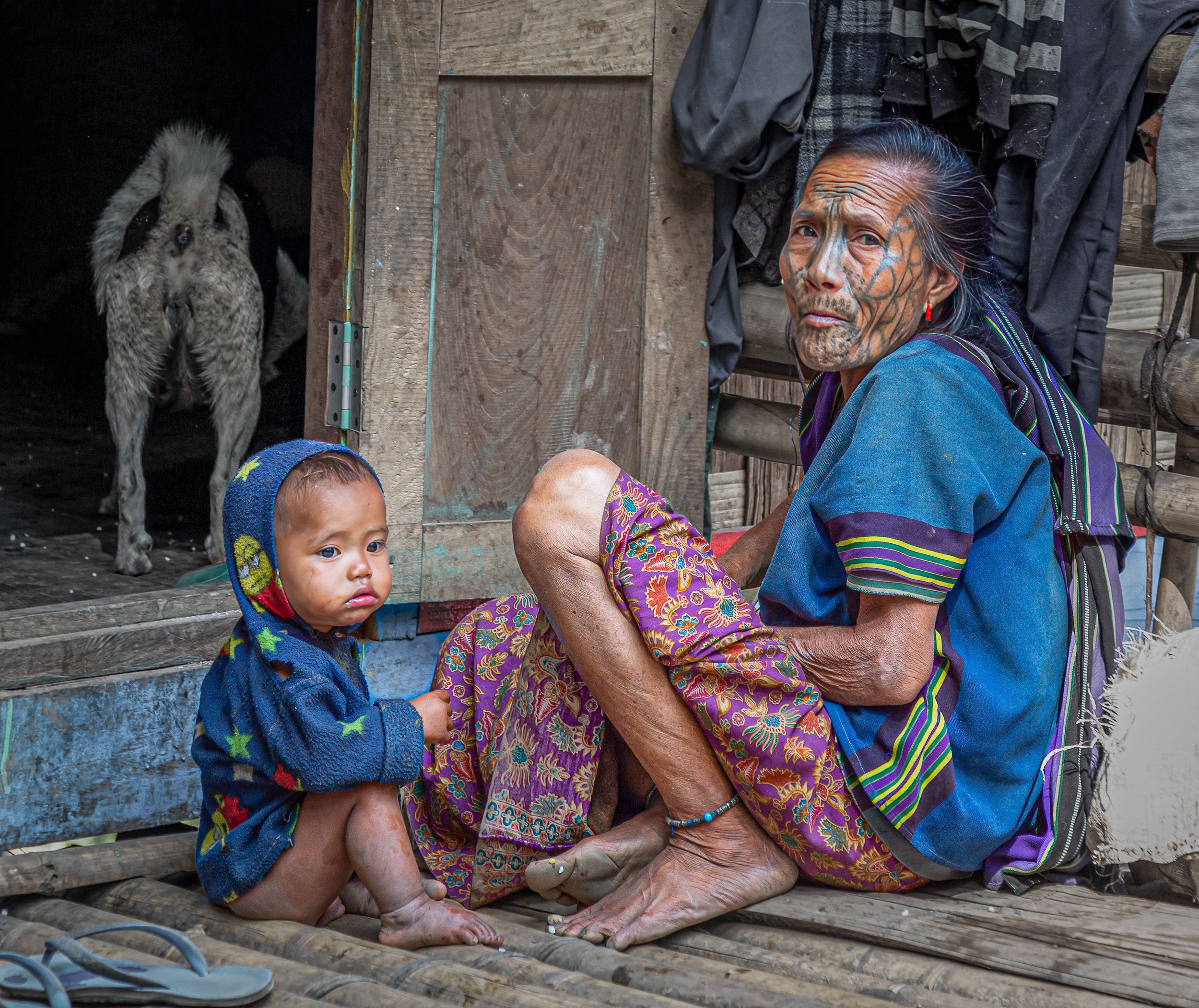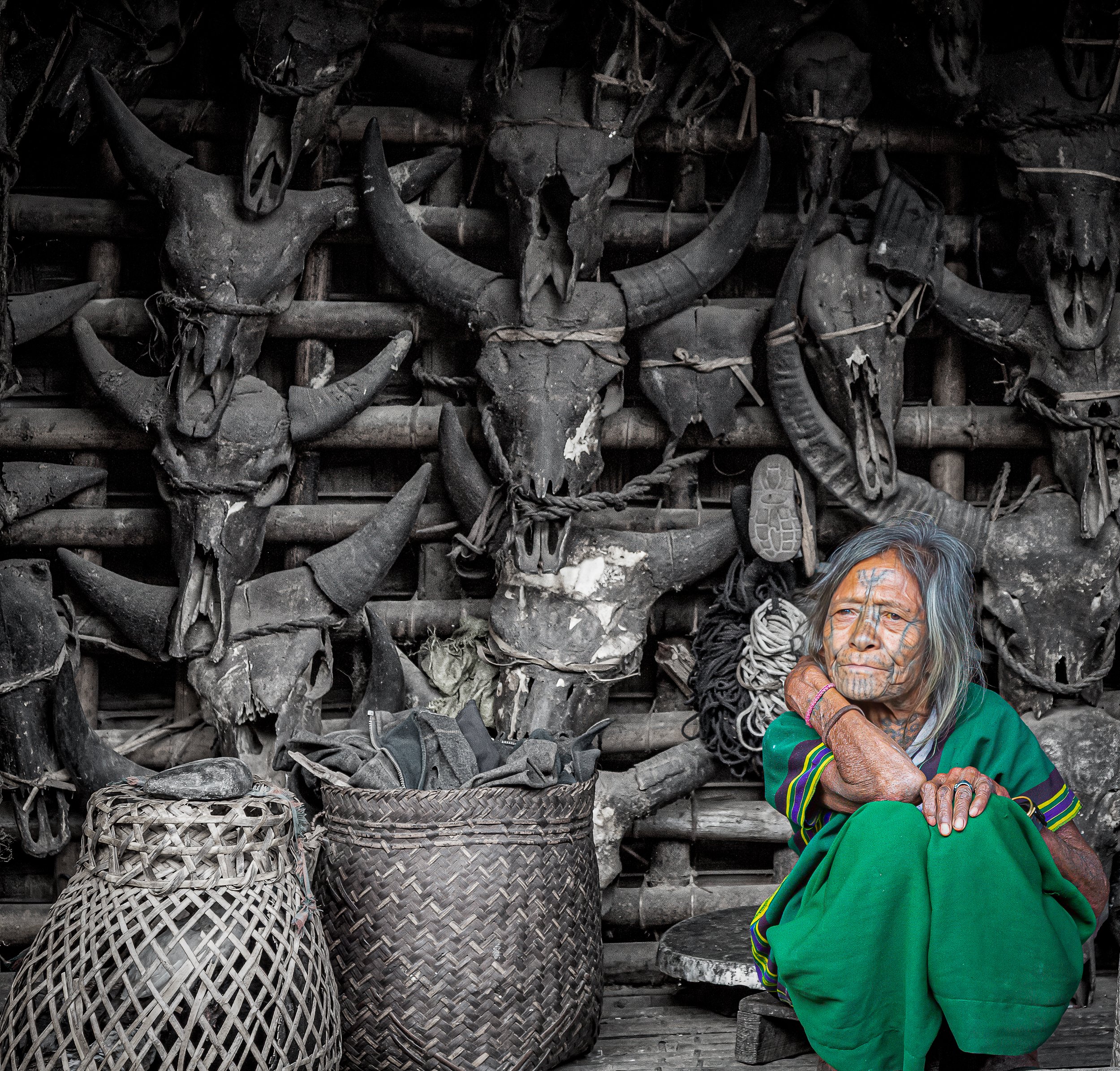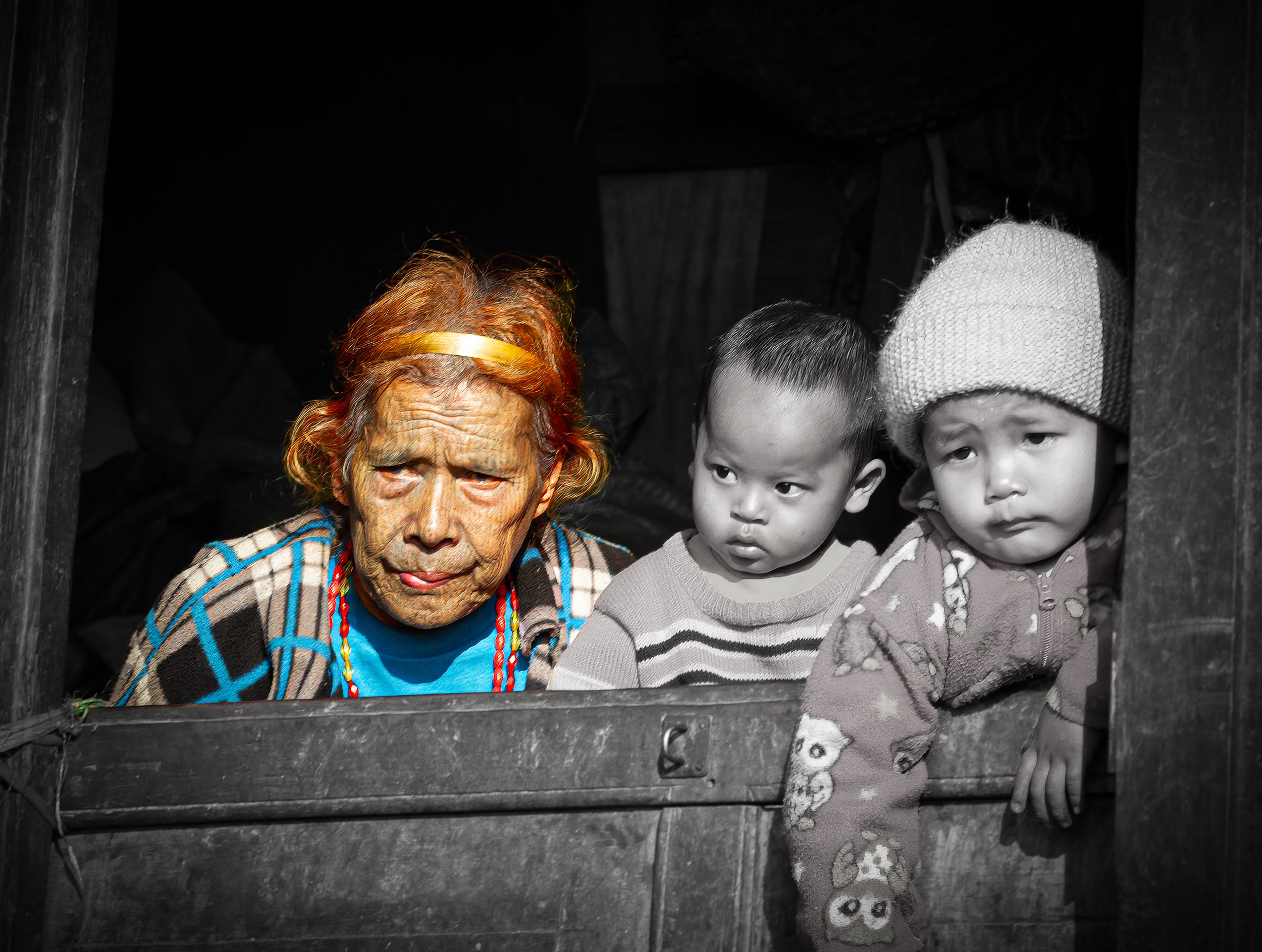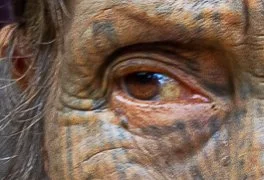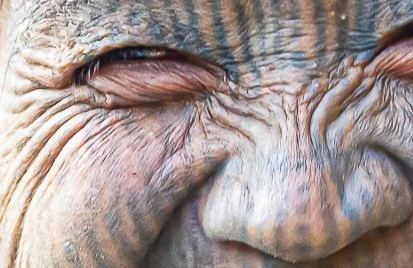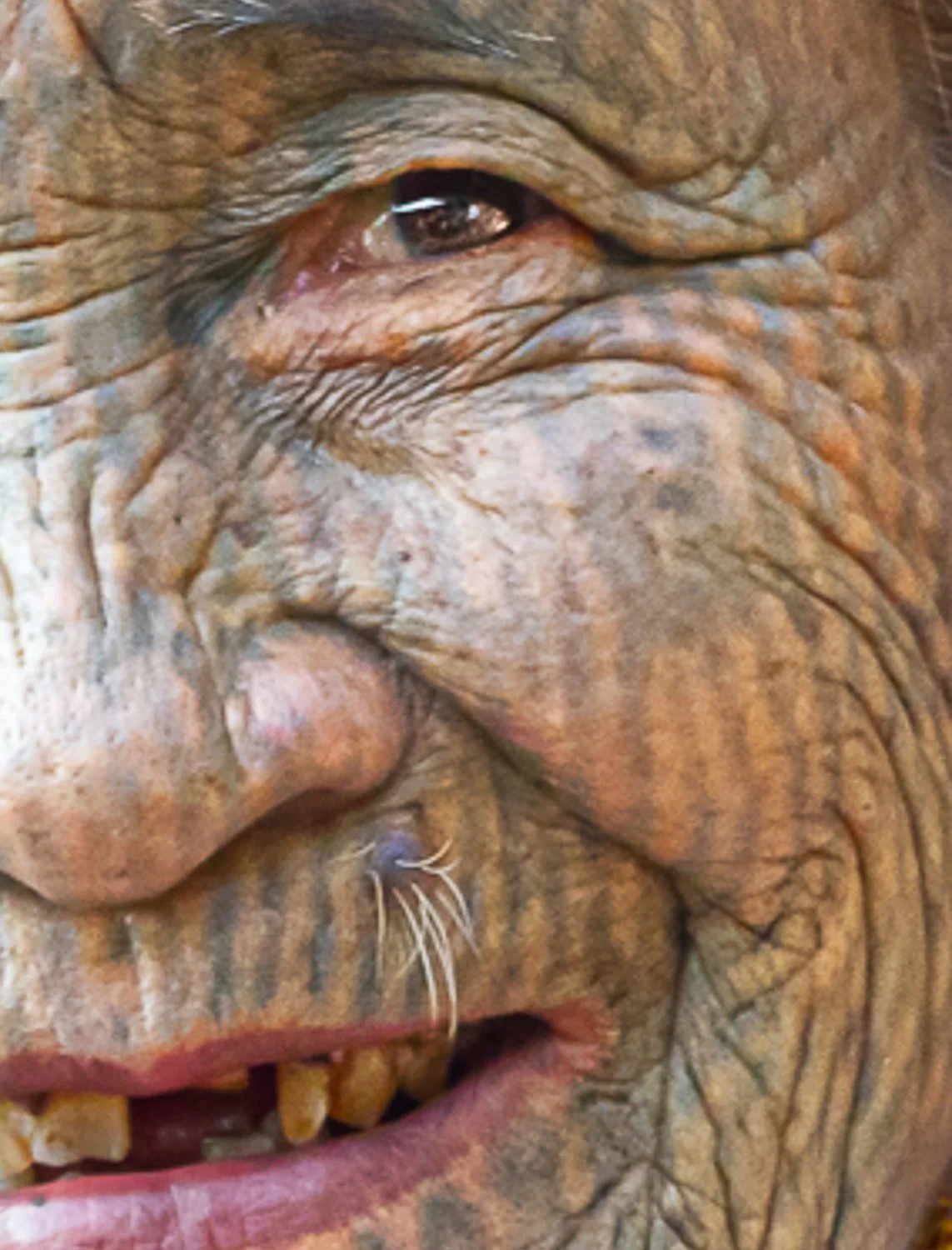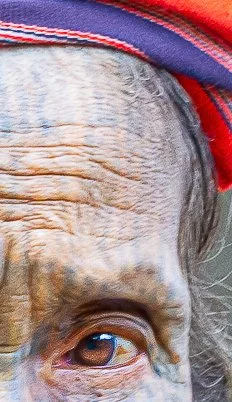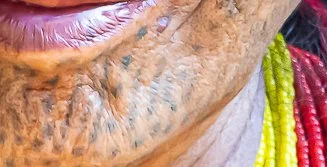The Painted Ladies of Chin State
High in the cloud-kissed hills of Chin State, Myanmar, dwell the painted ladies—keepers of a vanishing tale. Their faces, etched with intricate tattoos, are living canvases of courage and identity. Each line whispers ancestry, each pattern stitched in ink.
This is an ode to these women, to the quiet defiance etched upon their skin and the fading echoes of a tradition both sacred and scarred. Through these portraits, we glimpse not only the faces of the painted ladies, but the soul of a people suspended between memory and modernity.
In the lush, mist-wreathed hills of Chin State, where the land rolls in folds and the wind carries the old songs, there live the painted ladies — women whose faces are etched with ink and history, whose quiet presence holds the weight of a fading world.
Their tattoos are not mere ornaments. They are maps of memory, bold and deliberate, drawn in charcoal lines and indigo hues across the soft canvas of skin. Each symbol — a curve, a dot, a net of fine lines — speaks of endurance, of belonging, of beauty redefined through generations. These markings were once rites of passage - a girl becoming a woman, a woman becoming the keeper of culture. In them were prayers, protections, and pride. The designs were sung into the flesh by mothers and elders who understood that pain, too, can be sacred.
These facial tattoos represent a rich cultural heritage, a striking and deeply symbolic tradition once practiced by several Chin ethnic subgroups, unique in design to each tribe.
Who Are the Painted Ladies? They are mostly women from older generations of southern Chin State—especially around Kanpetlet, Mindat, and Matupi — who were tattooed in their youth, usually between the ages of 10 and 15. Today, these women are typically 70 years or older. Each tribe had its own style and pattern:
Lines, dots, spiderwebs, or full-face shading
Patterns often covered the forehead, cheeks, nose, and chin
Some used plant-based ink tapped into the skin with thorns or sharpened bamboo
When I visited I heard several theories for the origin of the practice:
Beauty or tribal identity: Tattoos marked cultural identity and were considered beautiful within the community.
Anti-abduction measure: A popular legend claims the tattoos were meant to deter Burmese kings or invaders from abducting Chin girls for their beauty.
Rite of passage: The tattooing ceremony marked a girl’s transition into womanhood.
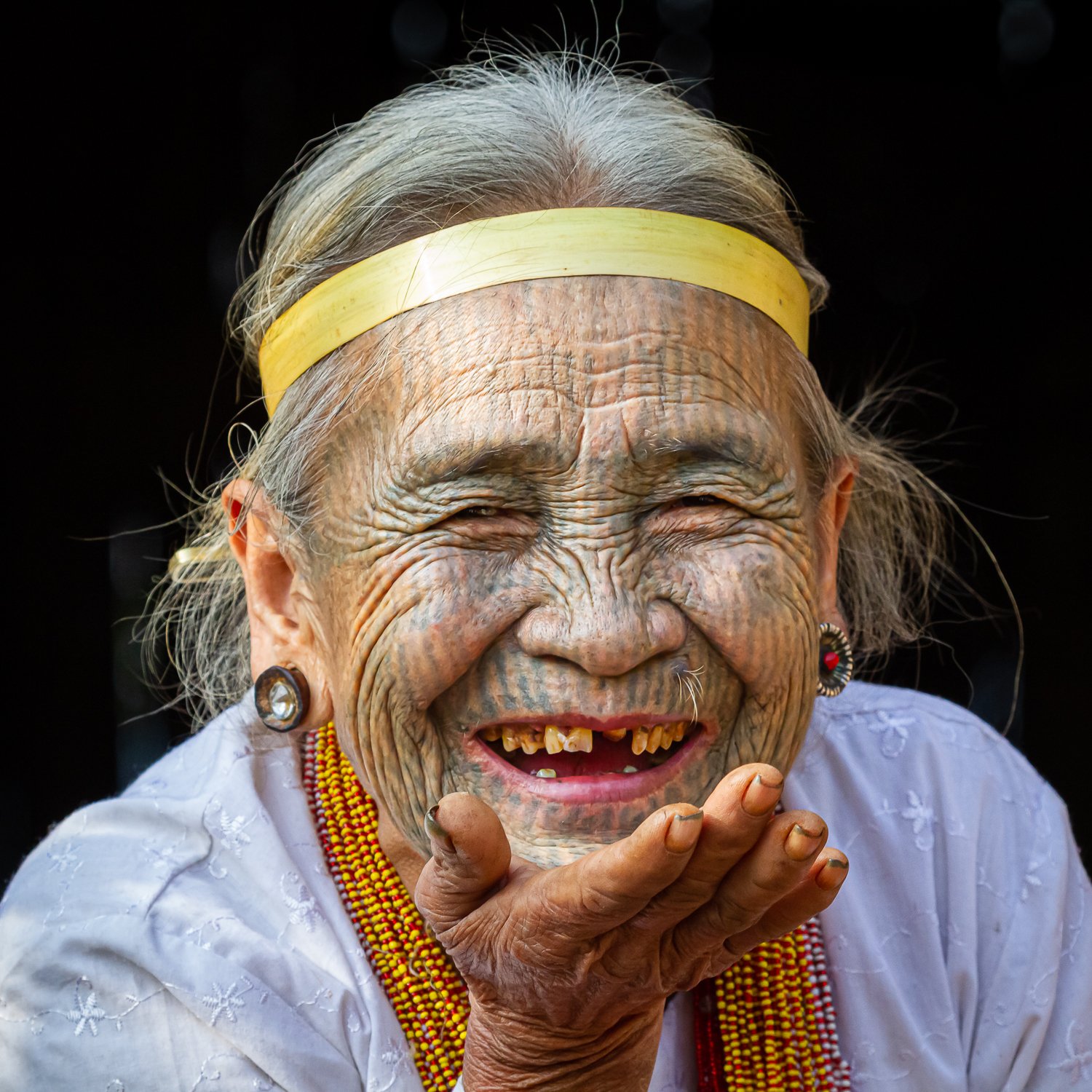
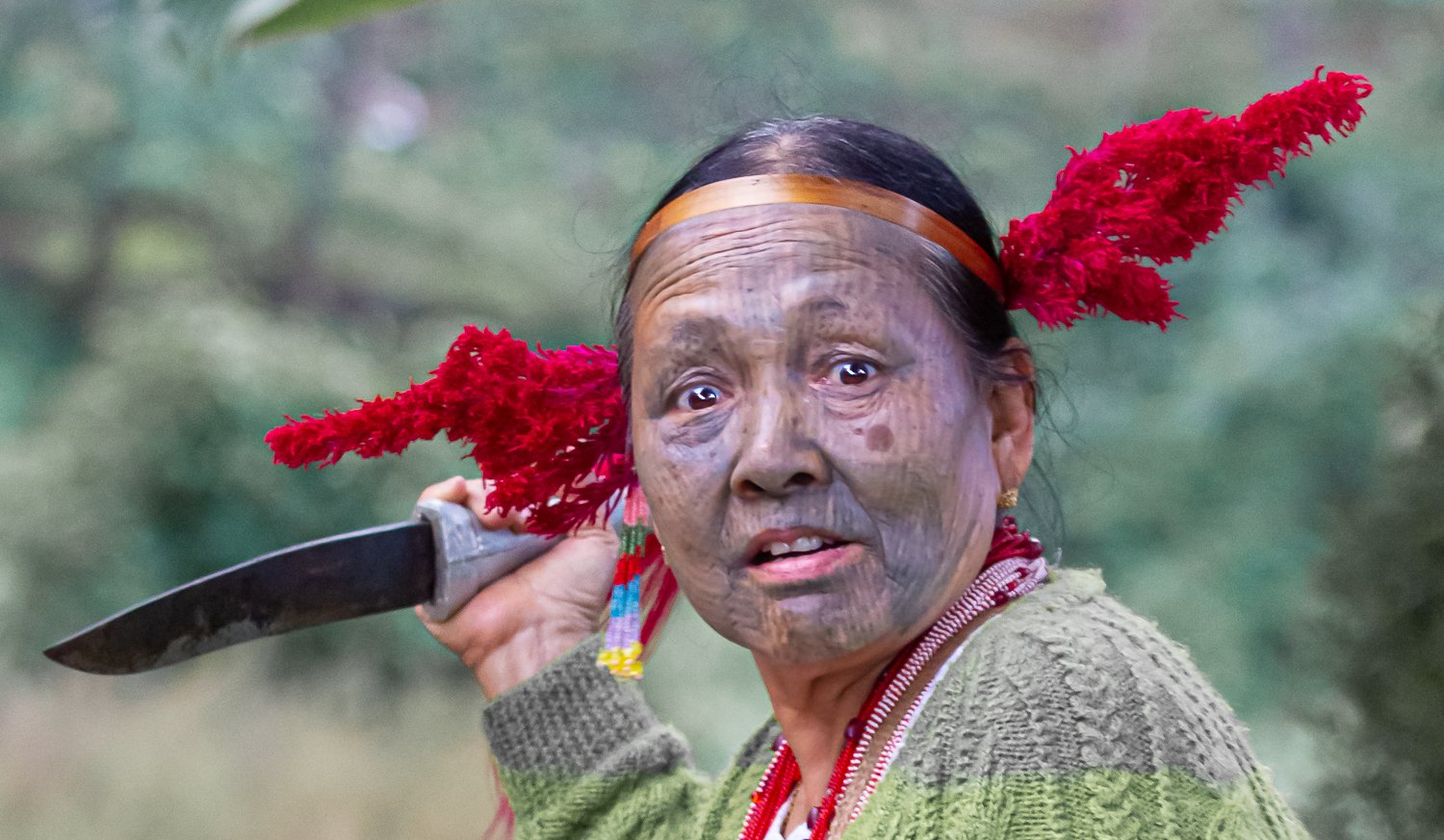
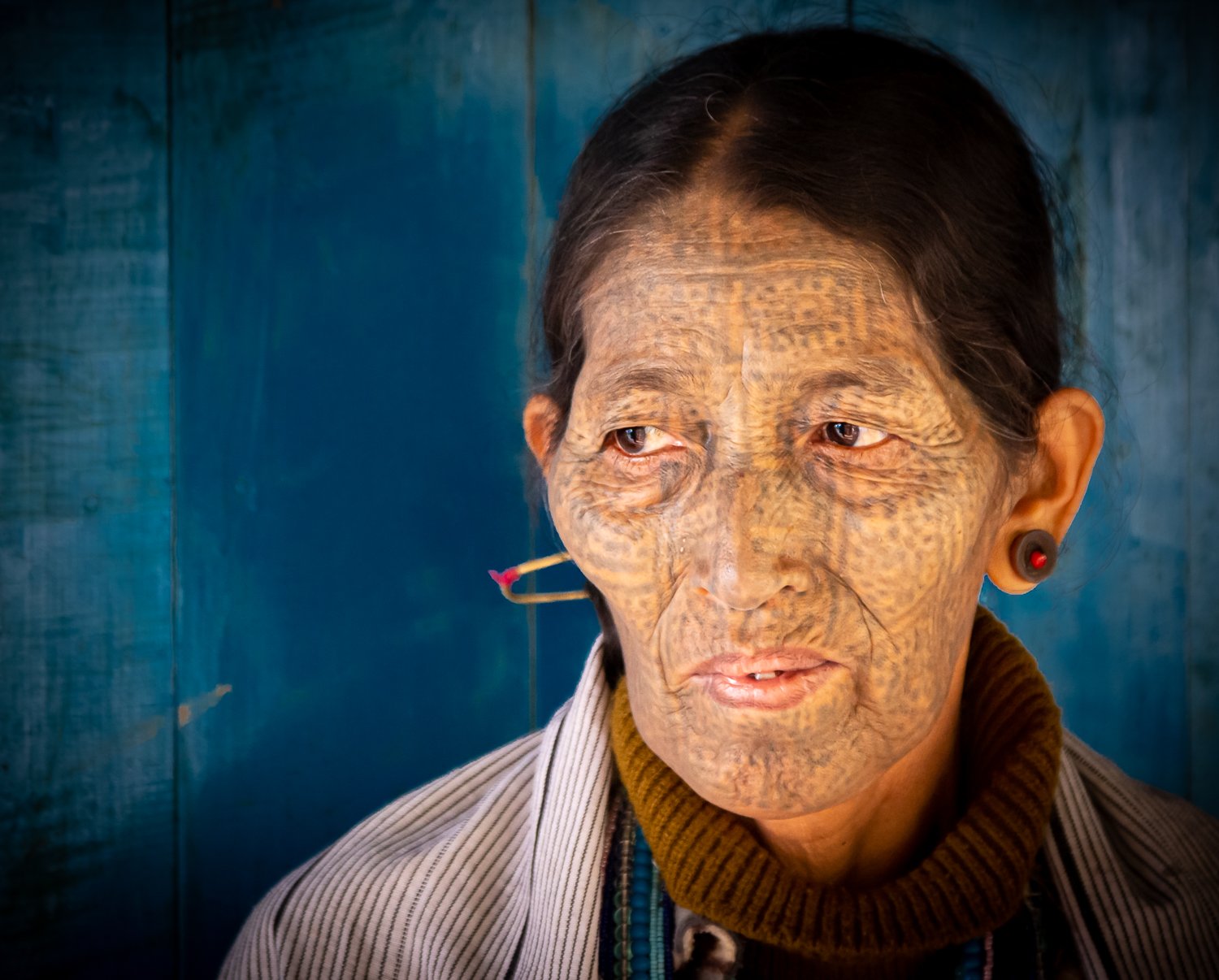

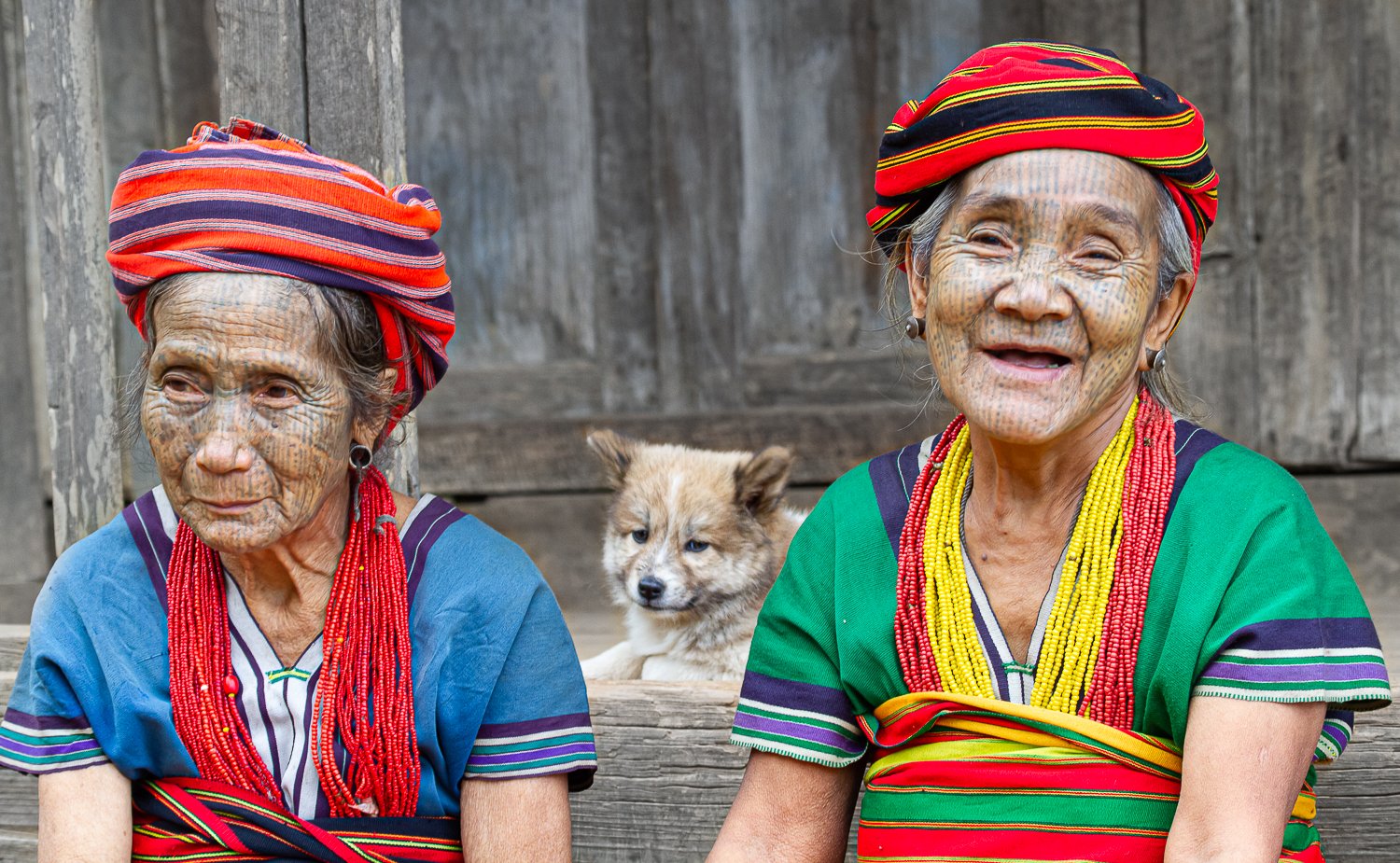
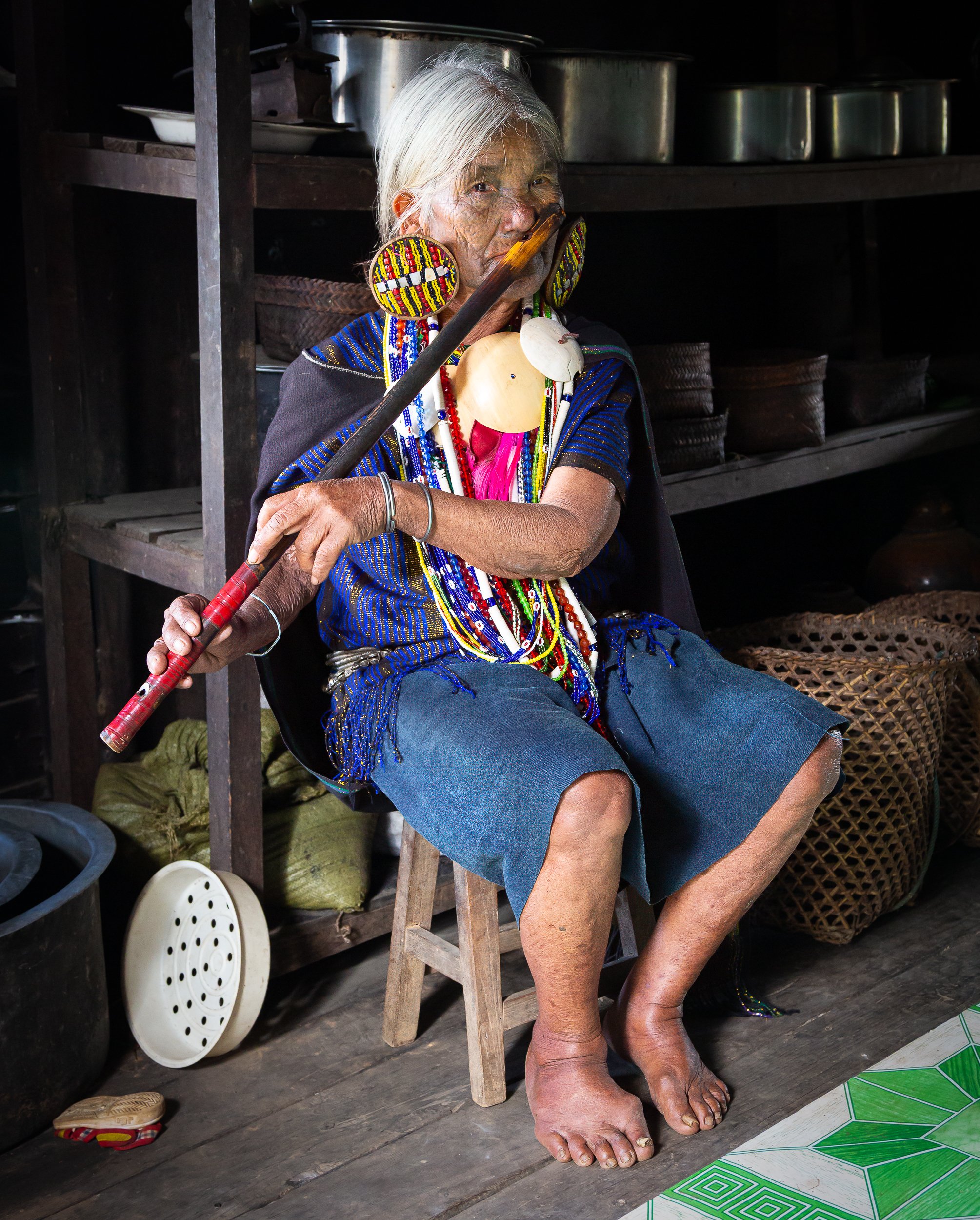
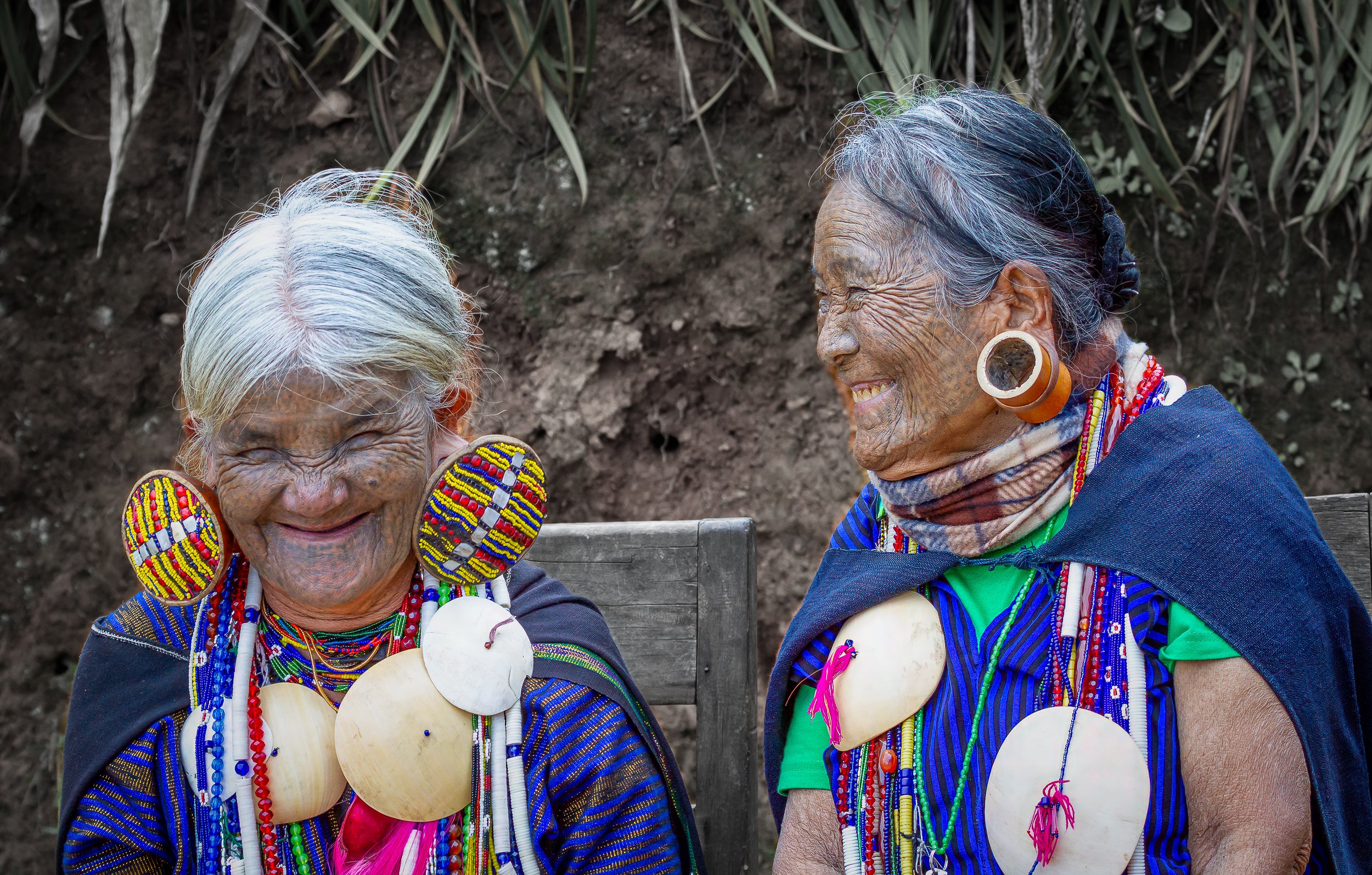
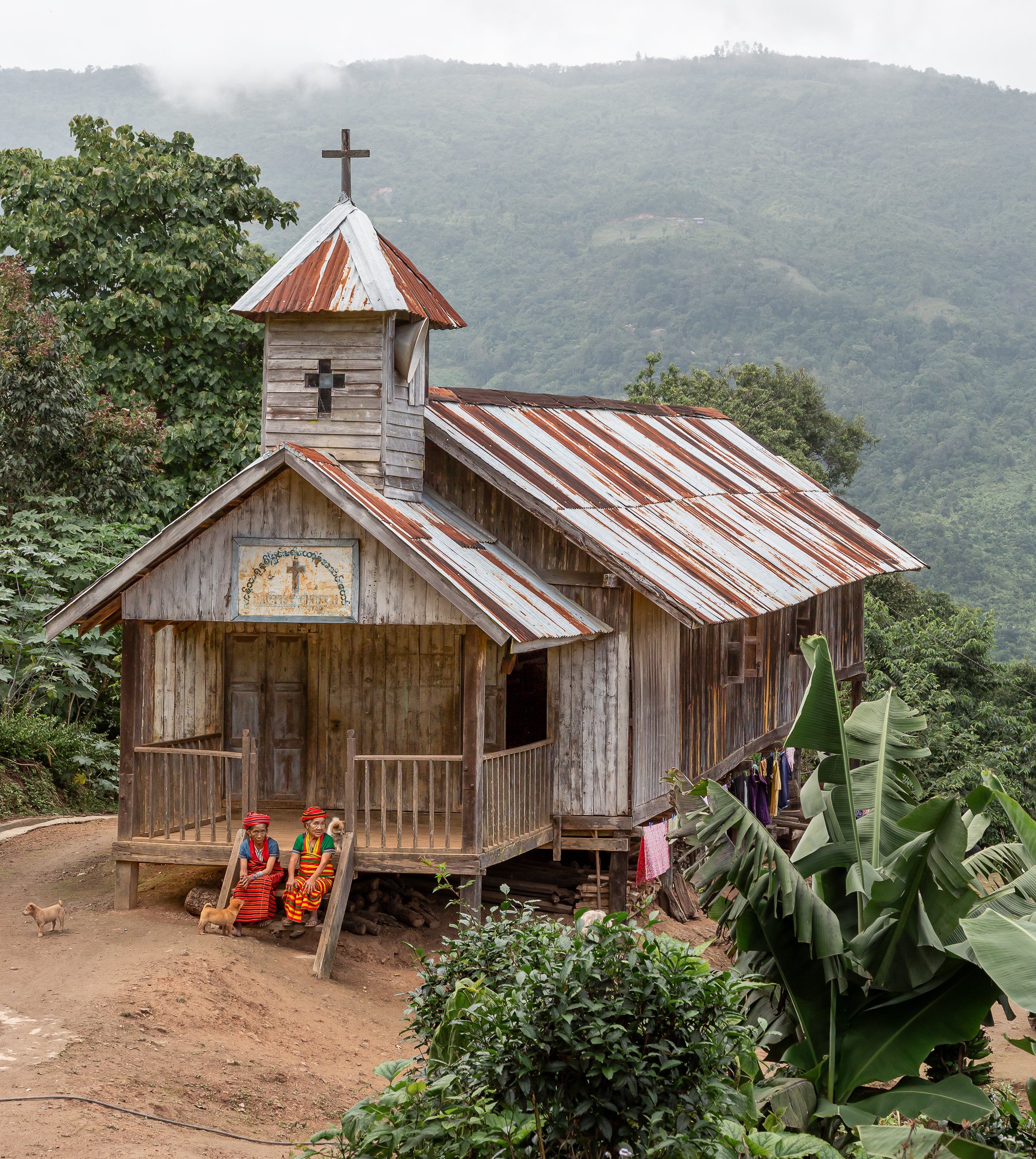
These women — now elders — walk the mountain paths slowly, their backs bowed, but their spirits unbent. In markets, they sit on low stools, selling woven cloth and fermented tea leaves, their tattooed faces drawing curious eyes and quiet reverence. They do not speak of themselves as symbols. But they are.
When they gather — often in sun-drenched courtyards or under the shade of betel trees — their laughter is warm and whole. They speak in low, lilting tones, telling stories not with urgency, but with calm certainty.
Although fading, the painted ladies of Chin State are not relics, nor just faces in photographs, but are women who make culture tangible, who carved identity into skin and spirit alike.

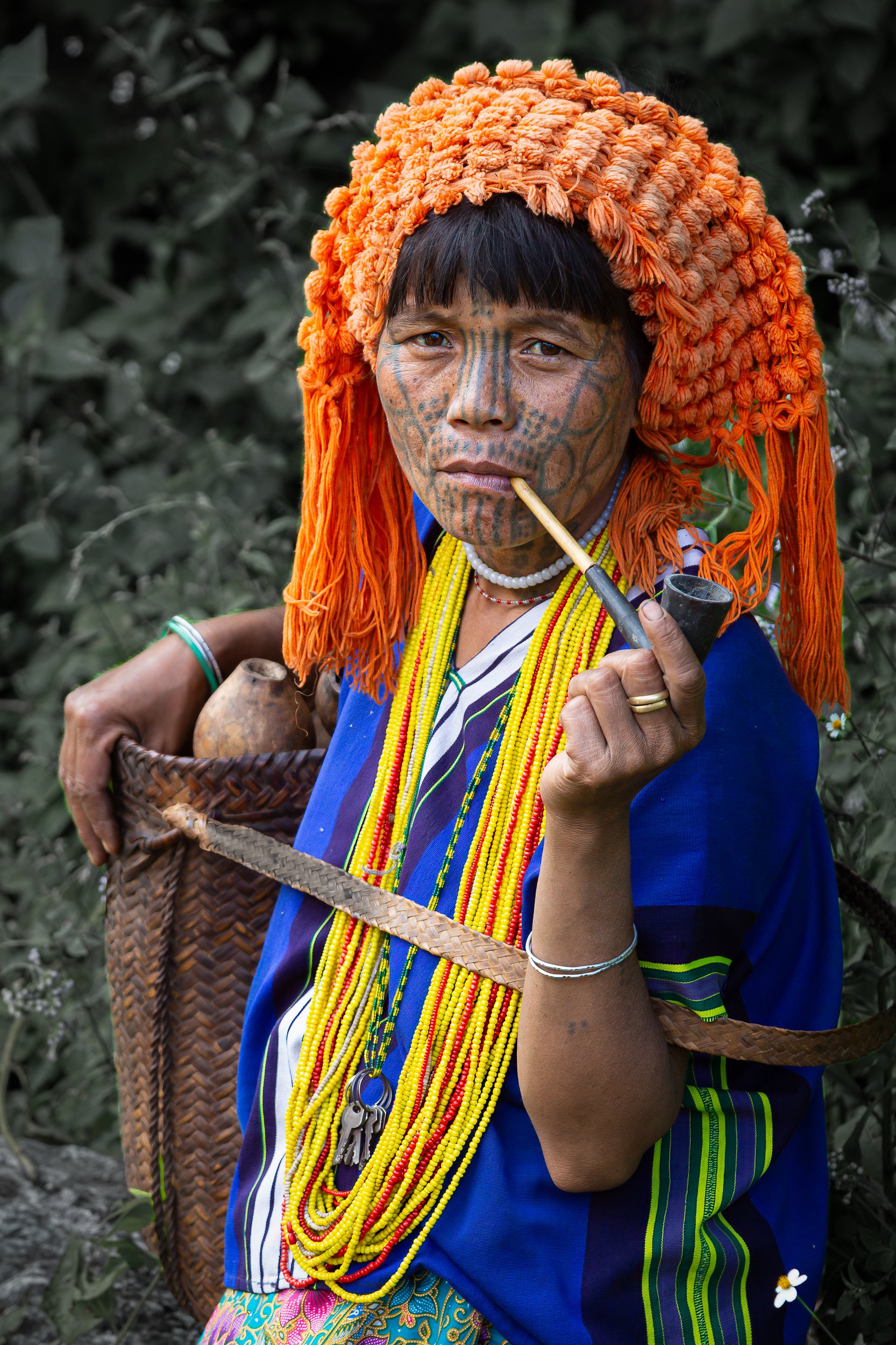

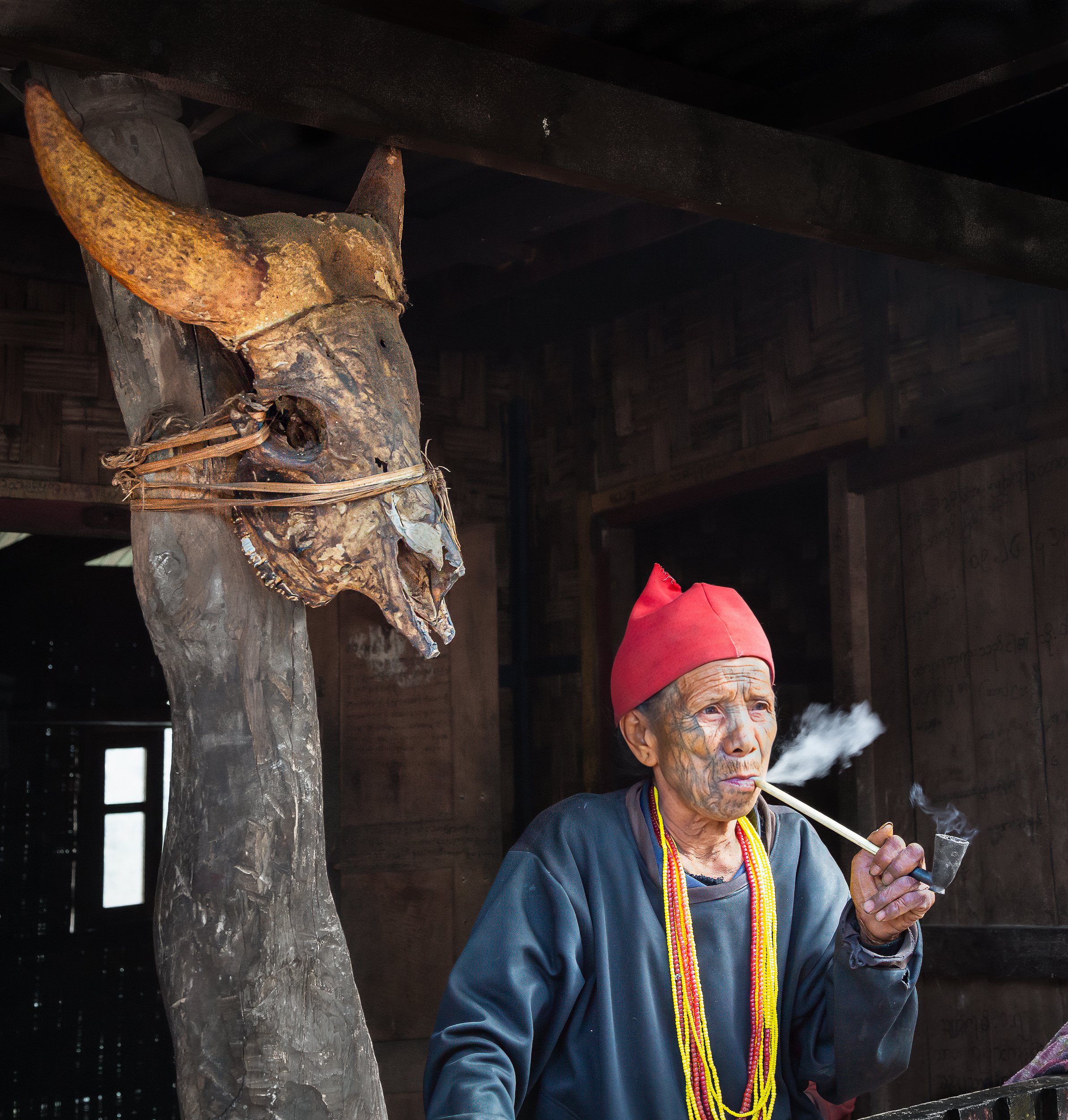
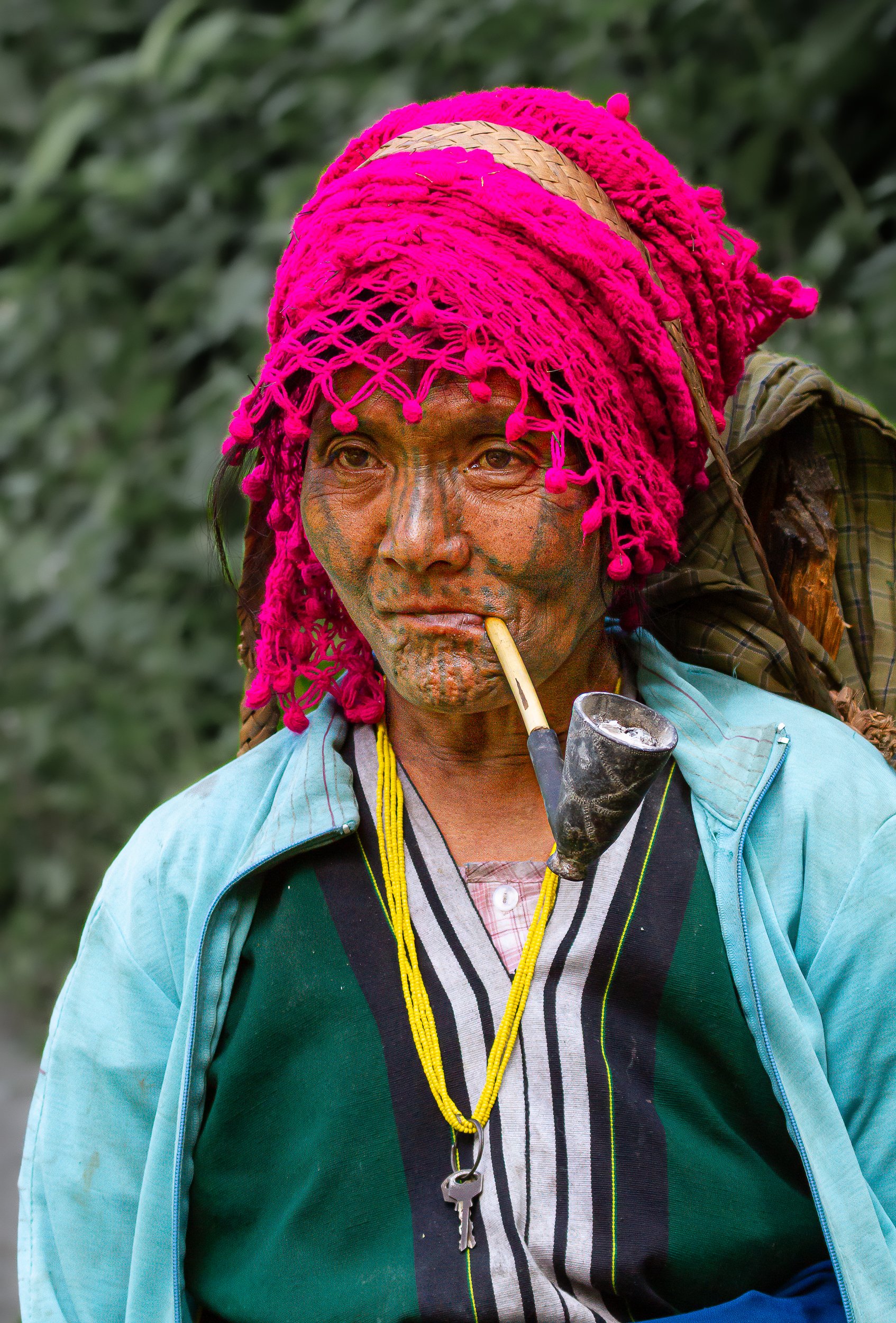
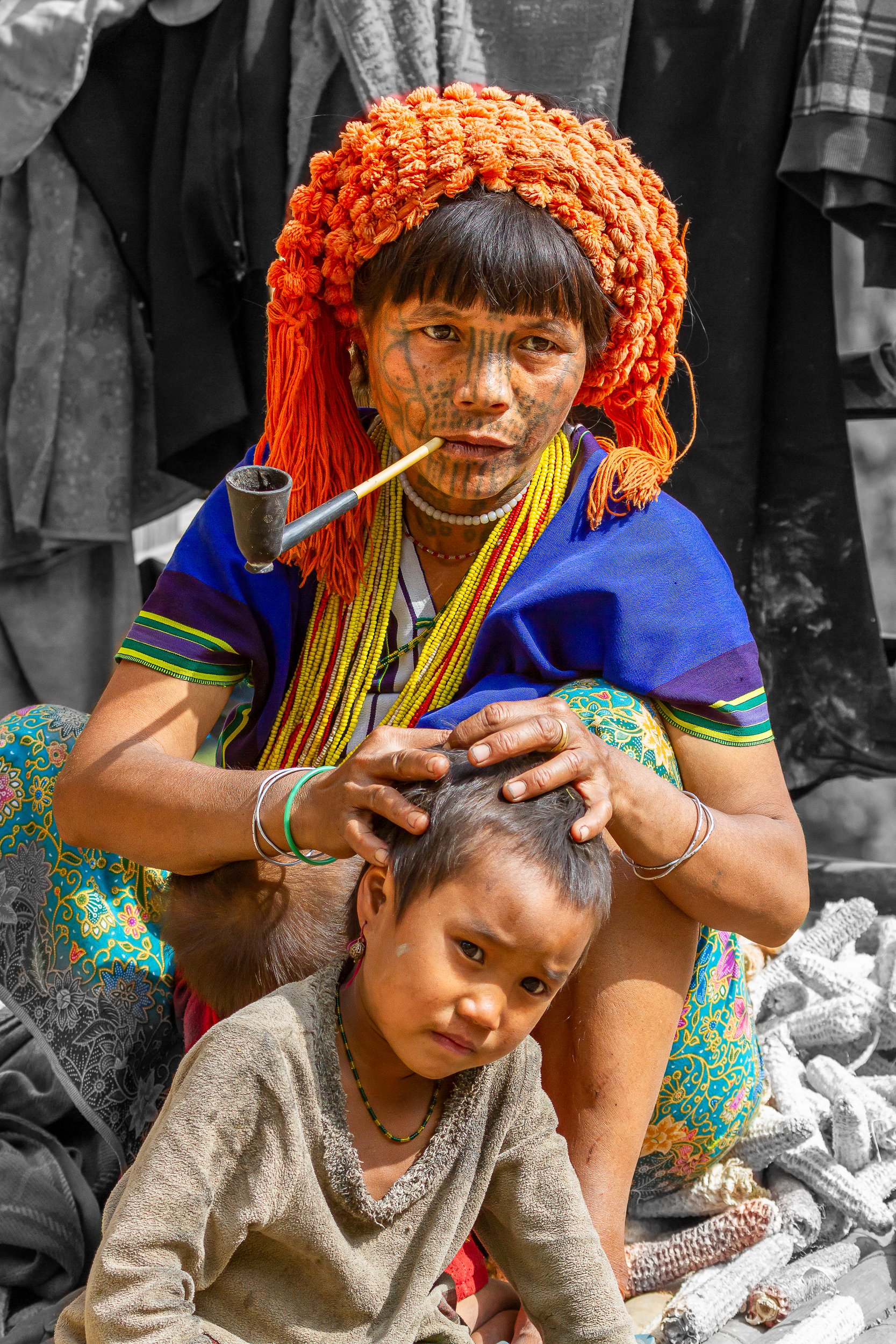
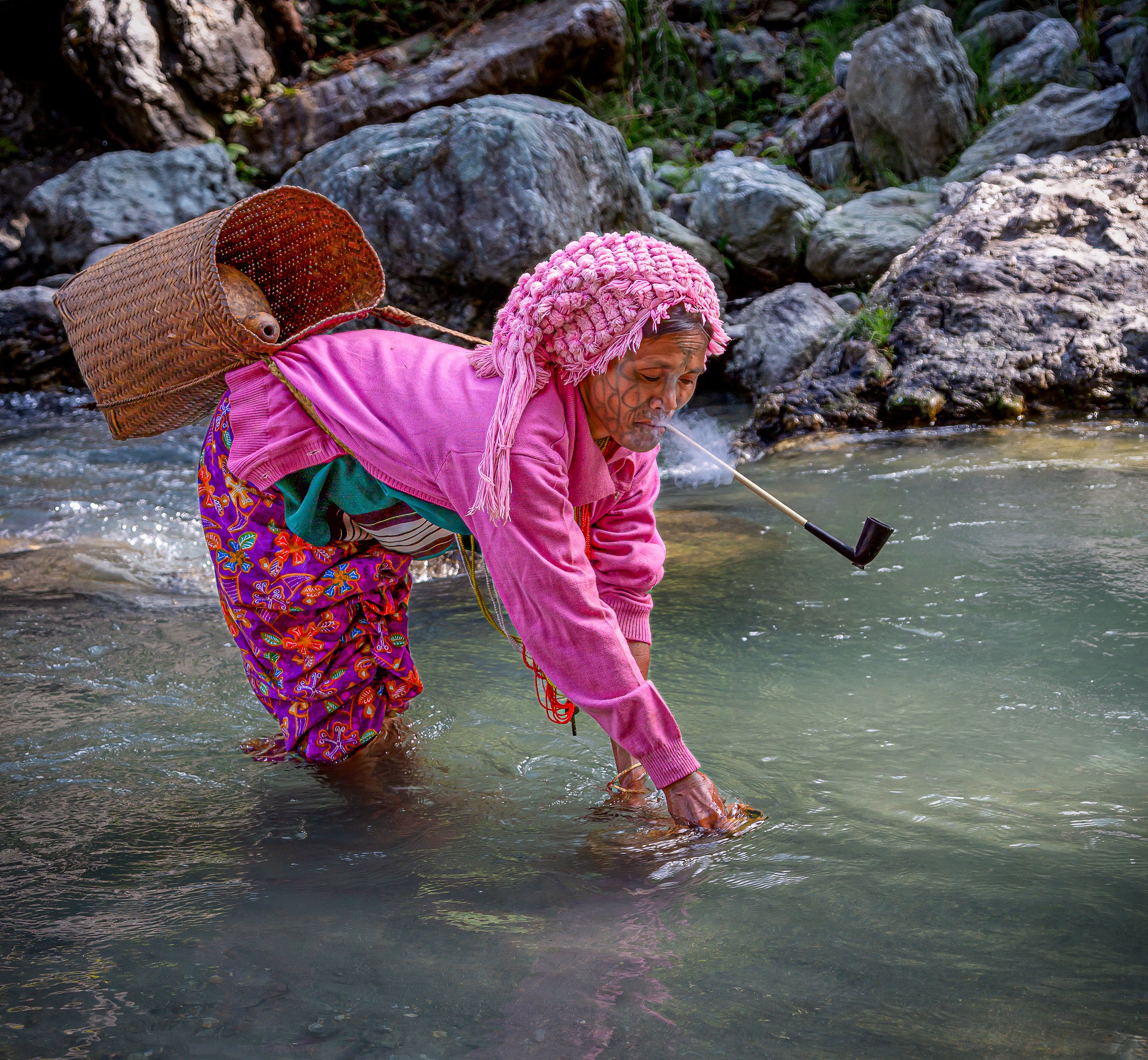
Among the many customs that persist with these women is their distinctive pipe smoking habit. The pipes are long, elegant instruments, usually made from bamboo or wood, with bowls crafted from metal, clay, or sometimes wood. The stem is slender and can be intricately carved or wrapped in decorative materials. They are held with poise and grace, often in stark contrast to the bold, geometric facial tattoos the women wear. Smoking is not merely a personal pastime but a communal ritual. These pipes— filled with a mix of tobacco, wood shavings, and sometimes dried herbs — are smoked slowly and socially, often while seated outside village homes or gathered around fires in the cold mountain air.
As modernization creeps into Chin State, their smoking habit — like their tattoos — becomes a quiet act of cultural preservation, a puff of memory in the winds of change.
Banned by the military government in the 1960s–70s as part of efforts to "modernize" ethnic minorities, and under the influence of changing views on body modification, the tradition is close to extinction. Very few tattooed women remain. Documentarists, researchers and photographers try to record and preserve the stories behind these tattoos, while some Chin communities are working to preserve the cultural memory through oral history and museums.
